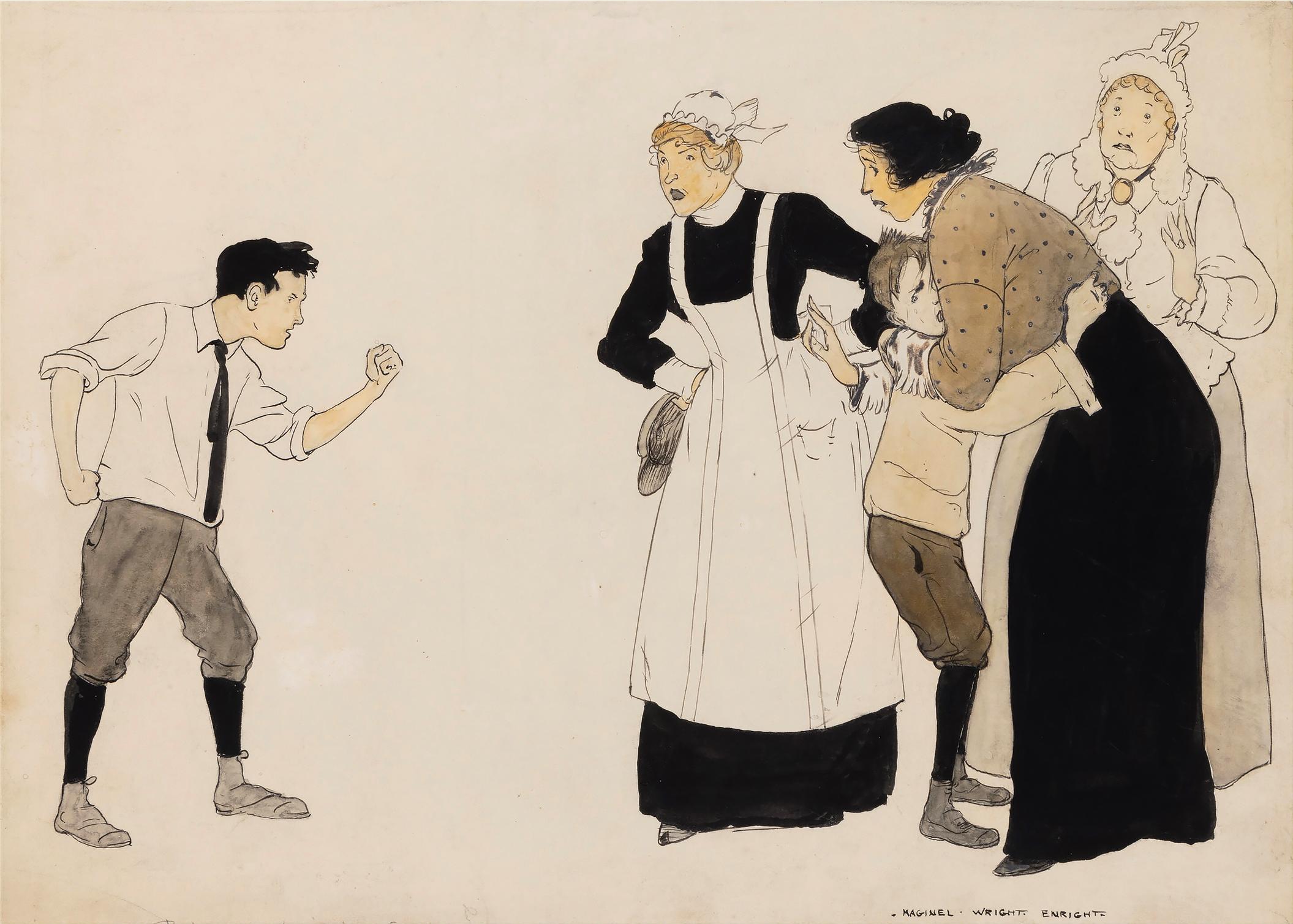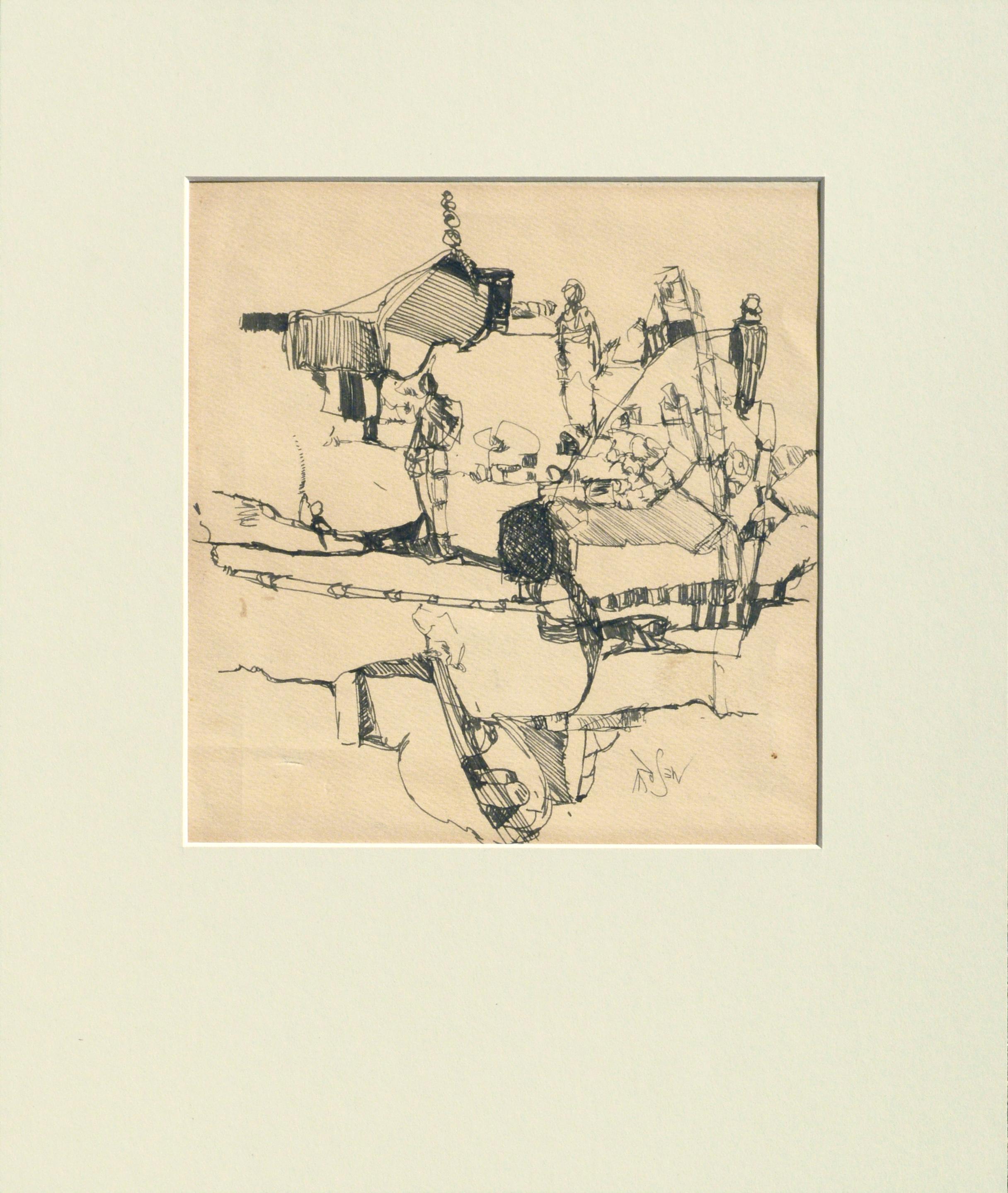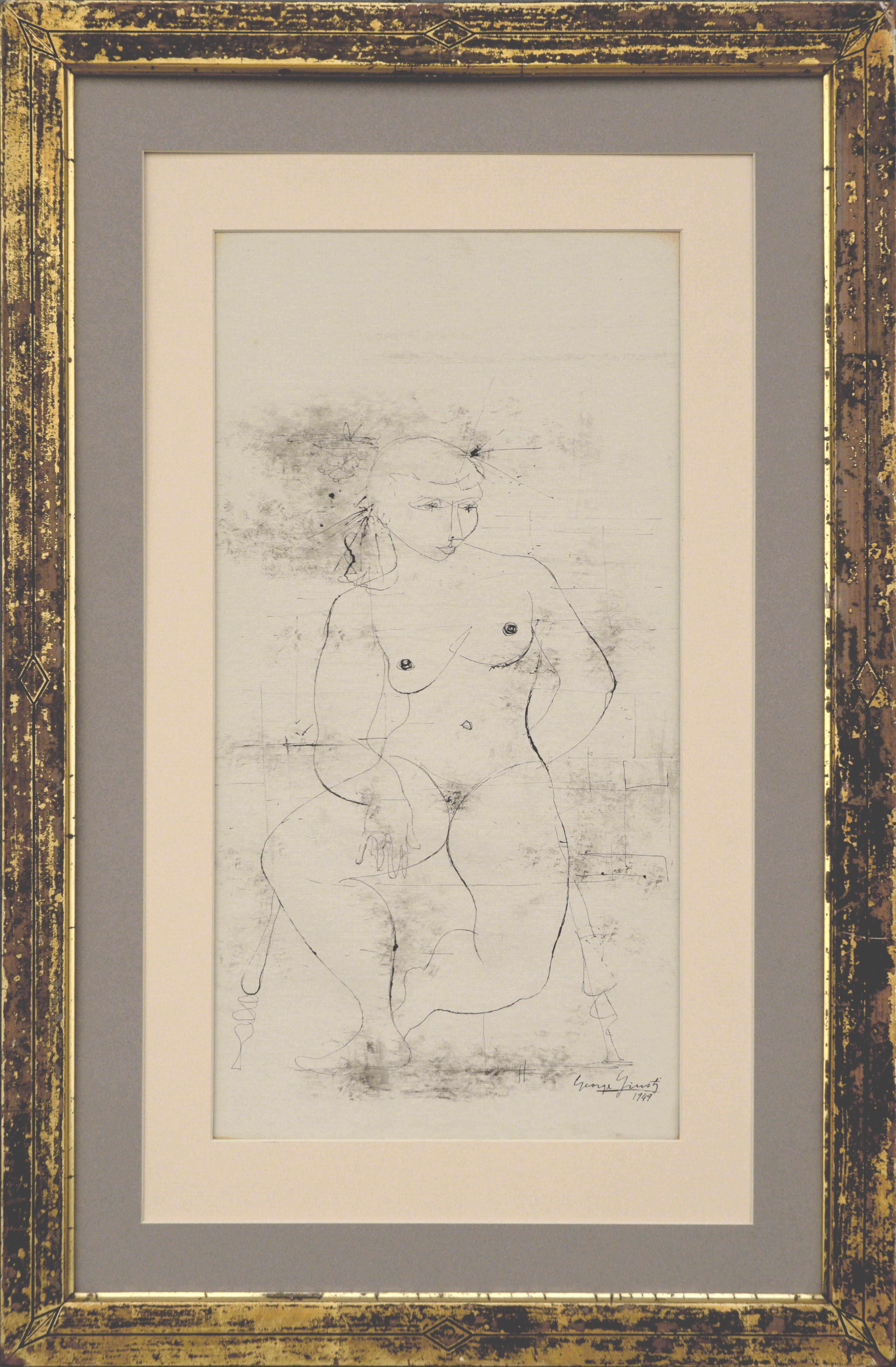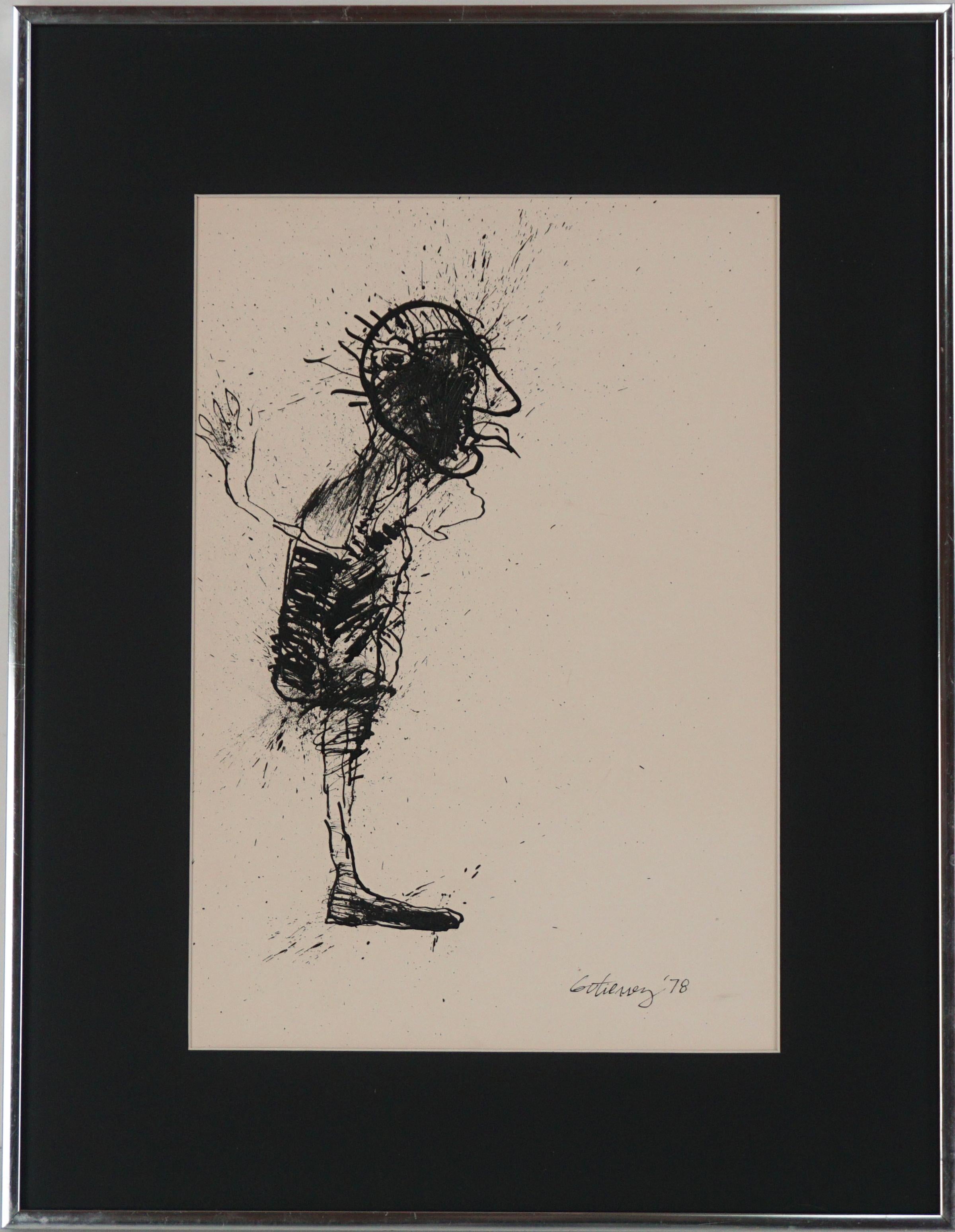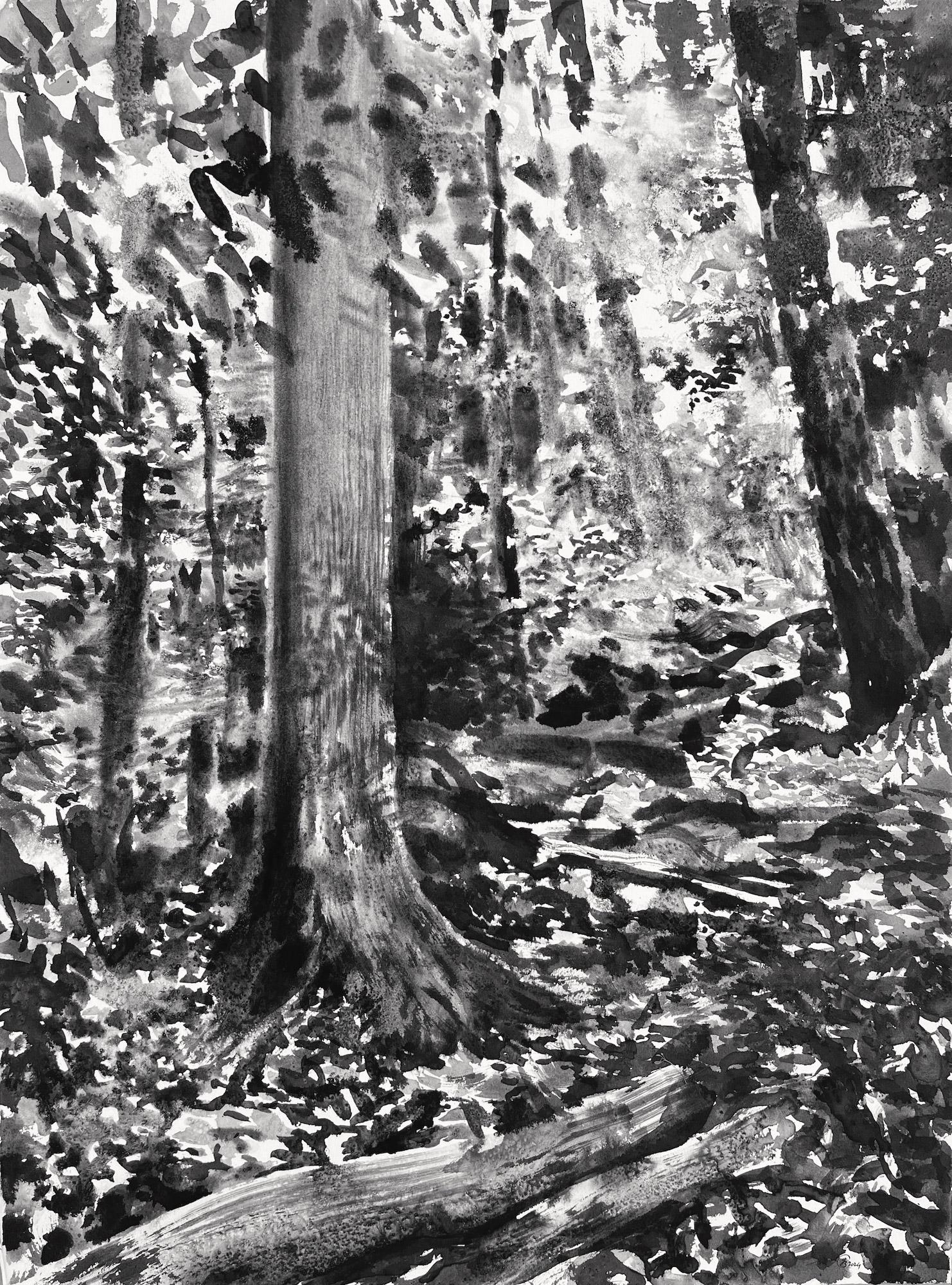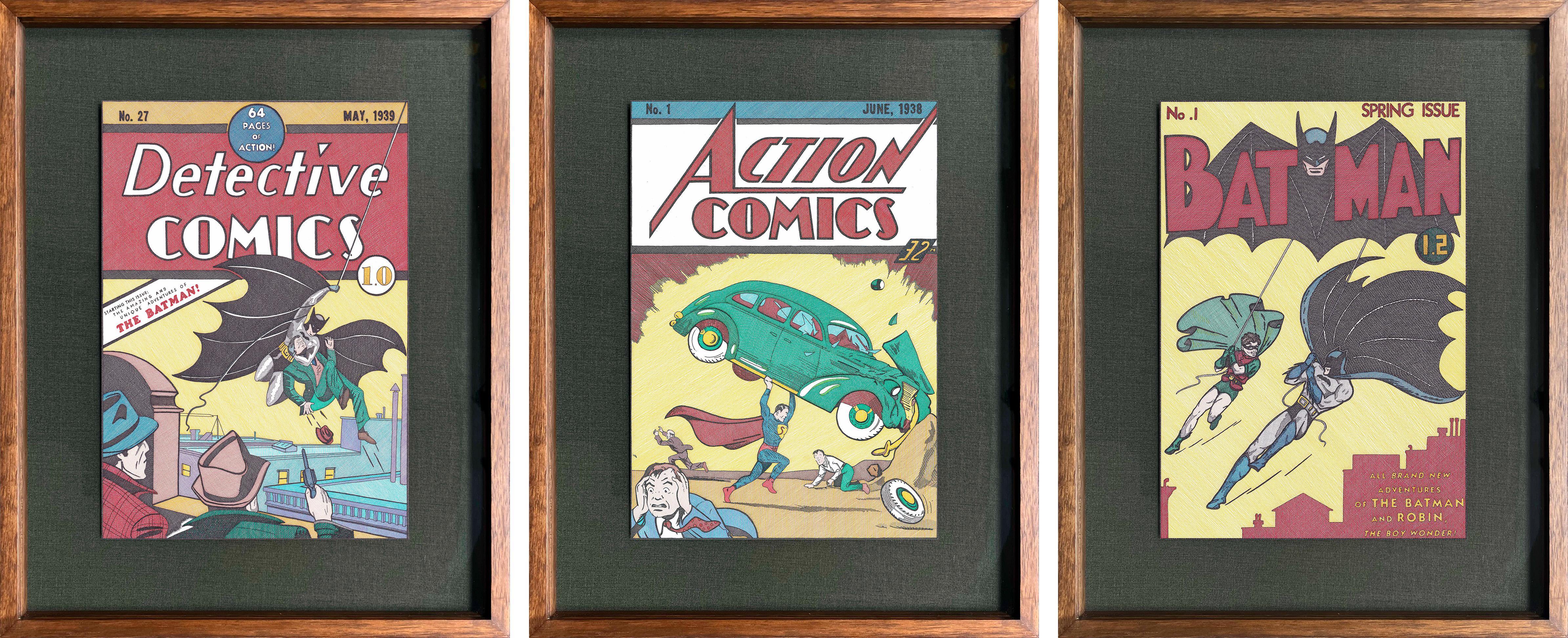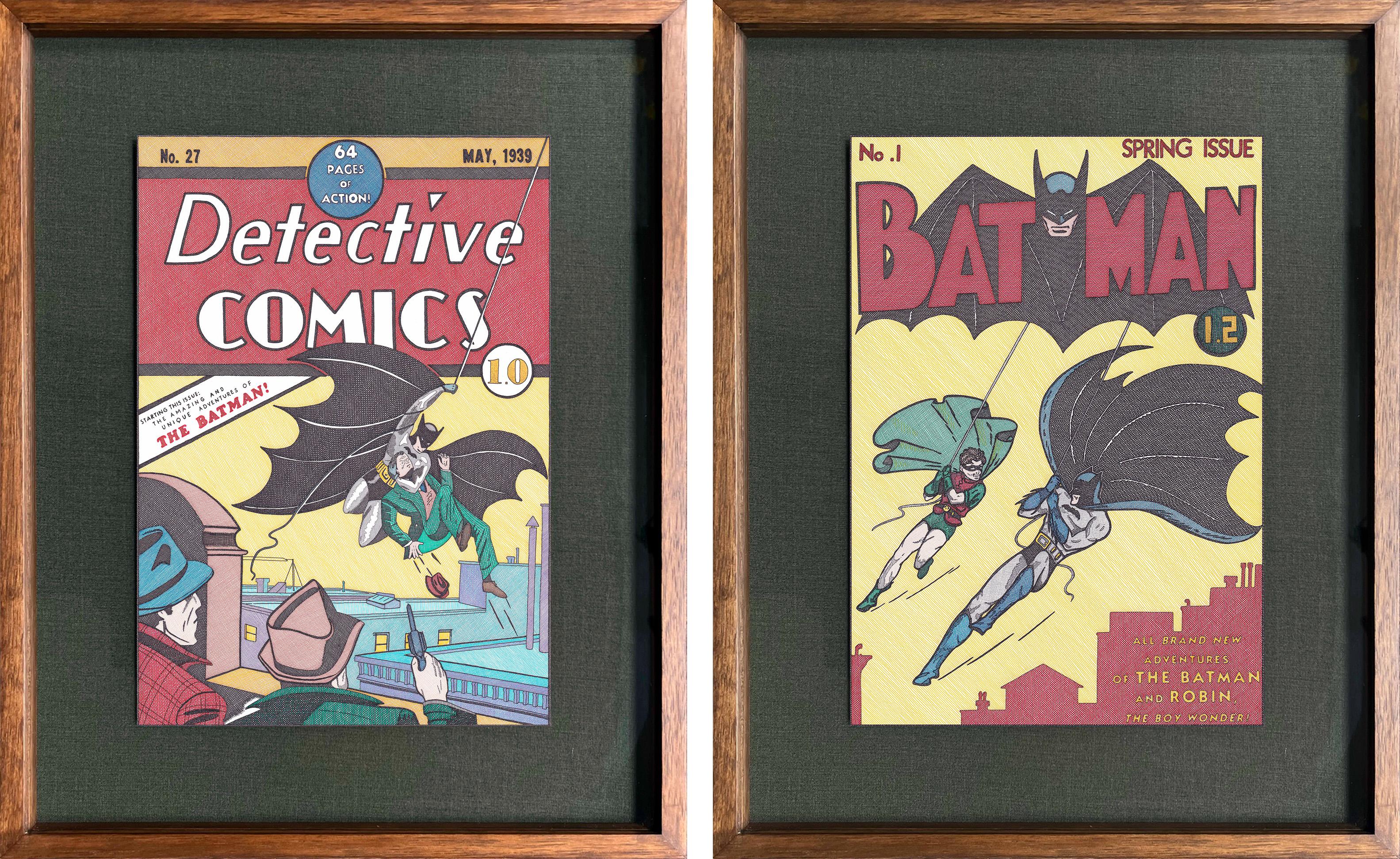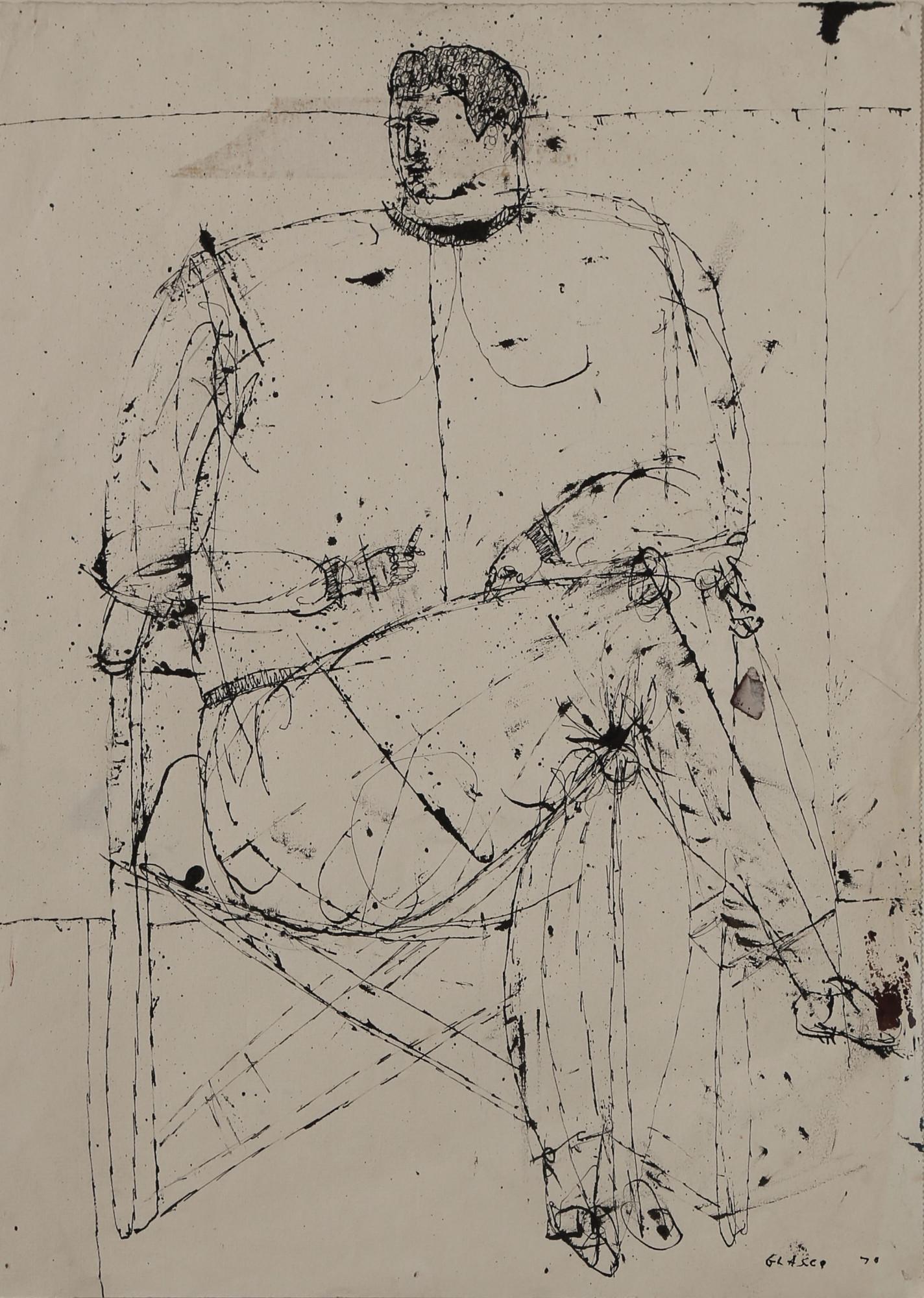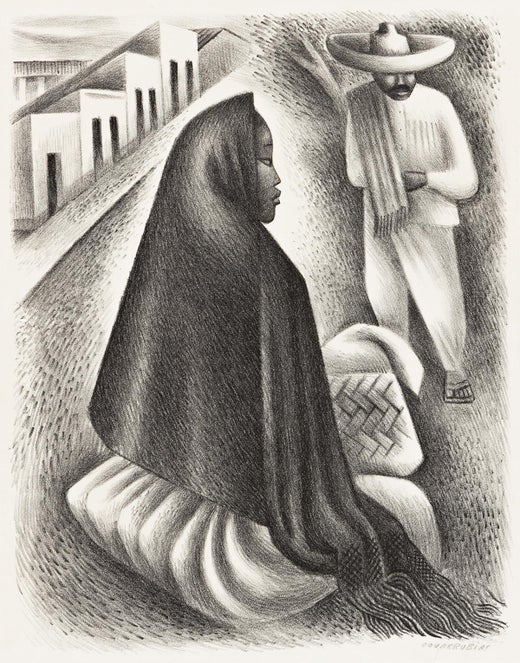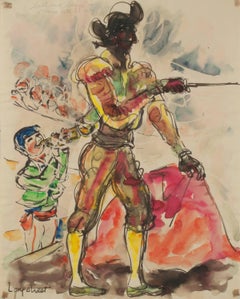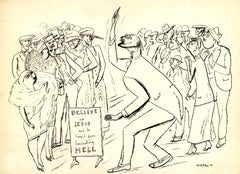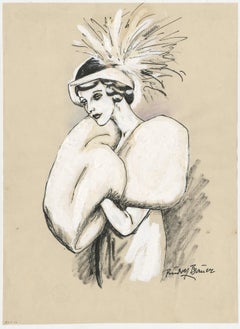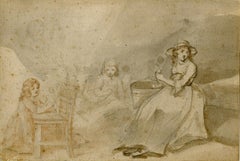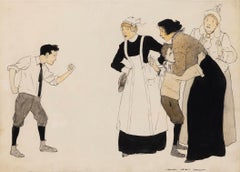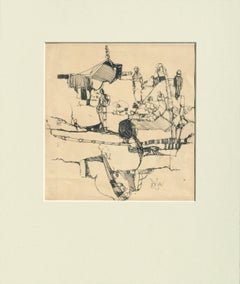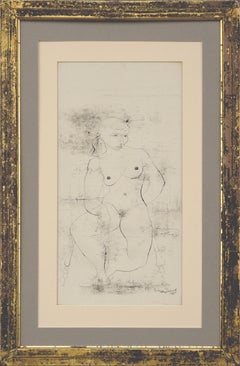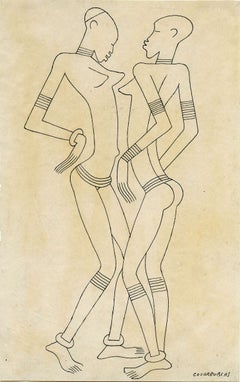
Figure Study for "Batouala"
View Similar Items
Want more images or videos?
Request additional images or videos from the seller
1 of 3
Miguel CovarrubiasFigure Study for "Batouala"c. 1937
c. 1937
About the Item
- Creator:Miguel Covarrubias (1904-1957, Mexican)
- Creation Year:c. 1937
- Dimensions:Height: 11 in (27.94 cm)Width: 6 in (15.24 cm)
- Medium:
- Period:
- Condition:Very good condition.
- Gallery Location:Fairlawn, OH
- Reference Number:Seller: FA57101stDibs: LU140121132
Miguel Covarrubias
Mexican born Miguel Covarrubias was known for his painted murals, caricatures, illustrations and scholarly writings. He moved to New York City in 1923 and illustrated for Vogue, The New Yorker and Vanity Fair. During the 1920s, Covarrubias studied in Paris, France and later traveled to Bali with his wife Rose Rolanda. He was a good friend of Mexican painter Diego Rivera. He made a great contribution to his work to educate people about Mexican and Pacific Rim culture and art.
About the Seller
5.0
Recognized Seller
These prestigious sellers are industry leaders and represent the highest echelon for item quality and design.
Gold Seller
Premium sellers maintaining a 4.3+ rating and 24-hour response times
Established in 1978
1stDibs seller since 2013
788 sales on 1stDibs
Associations
International Fine Print Dealers Association
Authenticity Guarantee
In the unlikely event there’s an issue with an item’s authenticity, contact us within 1 year for a full refund. DetailsMoney-Back Guarantee
If your item is not as described, is damaged in transit, or does not arrive, contact us within 7 days for a full refund. Details24-Hour Cancellation
You have a 24-hour grace period in which to reconsider your purchase, with no questions asked.Vetted Professional Sellers
Our world-class sellers must adhere to strict standards for service and quality, maintaining the integrity of our listings.Price-Match Guarantee
If you find that a seller listed the same item for a lower price elsewhere, we’ll match it.Trusted Global Delivery
Our best-in-class carrier network provides specialized shipping options worldwide, including custom delivery.More From This Seller
View AllBull Ring Brass - Mexico City
By Stephen Longstreet
Located in Fairlawn, OH
Bull Ring Brass - Mexico City
Watercolor, pen and ink on paper, 1955
Signed in ink, dated and titled in pencil (see photos)
Condition: 1'' repaired tear left edge, along with other minor tears.
Tape stains from previous matting visible in the four corners
Image/Sheet size: 19 3/8 x 15 5/8 inches
Provenance: Acquired directly from the Artist
Joseph M. Erdelac, Cleveland, friend and
patron of Longstreet
Stephen Longstreet (1907-2002)
The artist’s own grandchildren attempt to fathom the real life and nature of Stephen Longstreet, prolific author, artist, screenplay writer, and jazz aficionado.
Born Chauncy Weiner (sometimes spelled Wiener) in New York City in 1907, Longstreet reinvented himself on a regular basis. Changing his name first to “Henry,” then “Henri,” he started his career as a commercial artist for a department store. In various public biographies he claimed to have studied in New York, London, and Paris, and said he was a student of cartoonist Ralph Barton (1891-1931). Facts that can be documented are that he was art editor for Golfer and Sportsman magazines, and was a contributor to various other magazines including The New Yorker, Saturday Evening Post, Colliers, Life, and Hooey, among others. He wrote sketches for NBC radio and the Rudy Vallee Show.
In the 1930s, Longstreet worked and wrote under the names Thomas Burton, David Ormsbee, and Paul Haggard...
Category
1950s American Modern Figurative Drawings and Watercolors
Materials
India Ink, Watercolor, Pen
Believe in Jesus and be saved from everlasting Hell
By Adolf Arthur Dehn
Located in Fairlawn, OH
Signed and dated lower right
Provenance:
Estate of the artist
Ink on paper
Category
1920s Figurative Drawings and Watercolors
Materials
India Ink
Woman in a Fur Wrap
By Rudolf Bauer
Located in Fairlawn, OH
Woman in a Fur Wrap
Pen and ink heightened with white, c. 1920
Signed in ink lower right (see photo)
Estate stamp verso (see photo)
Provenance: estate of the artist
...
Category
1920s Art Deco Figurative Drawings and Watercolors
Materials
Ink
Family Group
By George Morland
Located in Fairlawn, OH
Family Group
Drawing in Chinese white, sepia and bistre ink, c. 1790
Signed lower left: G. Morland (see photo)
The present work appears to be a preliminary study for two Morland paintings where the artist uses portions of this preliminary study in finished exhibition paintings. The strongest association is with the painting entitled The Cottage Door (1790), now in the collection of Royal Holloway College, University of London. Morland uses the same small girl (on left side of this sheet) holding a doll on a chair in the exact same pose. The second painting entitled The Tea Garden (Tate Gallery, London, c. 1790) incorporates similar poses and gestures of the three other figure studies on this sheet.
Provenance: Colnaghi, London (Stock # D25924, see photo)
Maynard Walker Gallery, New York ( see photo of label)
Davis Galleries, New York, their Eagle stamp and stock number (see photo)
Ms. Gloria Kaplan (1930-2011) New York City
Regarding Maynard Walker:
Maynard Walker New York Times obit:
"Maynard Walker, an art dealer in New York City for nearly 40 years who was among the first to show the works of leading American regionalist painters, died of pneumonia Tuesday at St. Joseph's Hospital in Carbondale, Pa. He was 89 years old and lived in Lake Ariel, Pa.
In 1933, while working at the Ferargil Gallery in New York, Mr. Walker organized an exhibition for the Kansas City Art Institute that for the first time brought together the work of the regionalist painters Grant Wood, Thomas Hart Benton and John Steuart Curry.
After Mr. Walker opened his own gallery, at 108 East 57th Street, in 1935, these artists joined him and showed regularly there. The gallery was also among the first to show the work of George Grosz, the German painter and caricaturist, who moved to the United States in 1932. The gallery moved to 117 East 57th Street after the war."
Condition: Aging to paper
Slight fading to ink
Tiny spotting in image
All consistent with the age of the drawing
Image size: 6 3/8 x 9 1/2 inches
Frame size: 14 1/4 x 17 1/4 inches
George Morland was born in London on 26 June 1763. He was the son of Henry Robert Morland, and grandson of George Henry Morland, said by Cunningham to have been lineally descended from Sir Samuel Morland, while other biographers go so far as to say that he had only to claim the baronetcy in order to get it. Morland began to draw at the age of three years, and at the age of ten (1773) his name appears as an honorary exhibitor of sketches at the Royal Academy. He continued to exhibit at the Free Society in 1775 and 1776, and at the Society of Artists in 1777, and then again at the Royal Academy in 1778, 1779 and 1780.
His talents were carefully cultivated by his father, who was accused of stimulating them unduly with a view to his own profit, shutting the child up in a garret to make drawings from pictures and casts for which he found a ready sale. The boy, on the other hand, is said to have soon found a way to make money for himself by hiding some of his drawings, and lowering them at nightfall out of his window to young accomplices, with whom he used to spend the proceeds in frolic and self-indulgence. It has been also asserted that his father, discovering this trick, tried to conciliate him by indulgence, humouring his whims and encouraging his low tastes.
He was set by his father to copy pictures of all kinds, but especially of the Dutch and Flemish masters. Among others he copied Fuseli's Nightmare and Reynolds's Garrick between Tragedy and Comedy. He was also introduced to Sir Joshua Reynolds, and obtained permission to copy his pictures, and all accounts agree that before he was seventeen he had obtained considerable reputation not only with his friends and the dealers, but among artists of repute. A convincing proof of the skill in original composition which he had then attained is the fine engraving.
It is said that before his apprenticeship to his father came to an end, in 1784, Romney offered to take him into his own house, with a salary of £300, on condition of his signing articles for three years. But Morland, we are told, had had enough of restraint, and after a rupture with his father he set up on his own account in 1784 or 1785 at the house of a picture dealer, and commenced that life which, in its combination of hard work and hard drinking, is almost without a parallel.
Morland soon became the mere slave of the dealer with whom he lived. His boon companions were "ostlers, potboys, horse jockeys, moneylenders, pawnbrokers, punks, and pugilists." In this company the handsome young artist swaggered, dressed in a green coat, with large yellow buttons, leather breeches, and top boots. "He was in the very extreme of foppish puppeyism", says Hassell; "his head, when ornamented according to his own taste, resembled a snowball, after the model of Tippey Bob, of dramatic memory, to which was attached a short, thick tail, not unlike a painter's brush." His youth and strong constitution enabled him to recover rapidly from his excesses, and he not only employed the intervals in painting, but at this time, or shortly afterwards, taught himself to play the violin. He made also an effort, and a successful one, to free himself from his task-master, and escaped to Margate, where he painted miniatures for a while. In 1785 he paid a short visit to France, whither his fame had preceded him, and where he had no lack of commissions.
Returning to London, he lodged in a house at Kensal Green, on the road to Harrow, near William Ward, intercourse with whose family seems for a time to have had a steadying influence. It resulted in his marriage with Miss Anne Ward...
Category
1790s English School Figurative Drawings and Watercolors
Materials
Ink
Lower East Side Crowd
By Abraham Walkowitz
Located in Fairlawn, OH
Lower East Side Crowd
Ink and ink wash on paper, c. 1910
Signed in ink lower center edge (see photo)
Signed with the initials lower right corner (see p...
Category
1910s American Modern Figurative Drawings and Watercolors
Materials
Ink
New Orleans Sportin House
By Stephen Longstreet
Located in Fairlawn, OH
New Orleans Sportin House
Pen and ink on paper, 1951
Signed in ink, titled and dated in pencil (see photos)
Condition: Corners are pasted to support sheet, some staining in image.
Im...
Category
1950s American Modern Figurative Drawings and Watercolors
Materials
Ink
You May Also Like
The Bully - Narrative Art by Female Illustrator Golden Age of Illustration
By Maginel Wright Enright Barney
Located in Miami, FL
The present work exhibits a storytelling and illustration art style created before the mass communications age. It was rendered in a flat linear style by the highly talented Maginel ...
Category
1910s American Impressionist Figurative Drawings and Watercolors
Materials
India Ink, Watercolor, Board
Old-fashioned figurative drawing nude ink on paper, 19th century
Located in Florence, IT
The drawing, India ink on paper, falls within the studies of antiquity popular in the Academies from the 18th century onward, and refers to the frieze of an ancient sarcophagus.
Al c...
Category
19th Century Academic Figurative Drawings and Watercolors
Materials
Paper, India Ink
Abstract Figures and Landscape, Surreal Line Drawing Composition
By David Rosen (b.1912)
Located in Soquel, CA
Dynamic surrealist line drawing of figures in an abstracted landscape by David Rosen (Canadian, 1912-2004). Signed "Rosen" in the lower right corner. Presented in a new tan mat with ...
Category
Late 20th Century Surrealist Figurative Drawings and Watercolors
Materials
Paper, India Ink
Mid Century Modernist Seated Nude Figure Study
By George Giusti
Located in Soquel, CA
Abstract nude figurative drawing by George Giusti, (Italian 1908-1990). India ink on gesso patterned drawing paper created in 1949. Signed “George Giusti 1949” in the lower right corner. Presented in a distressed giltwood frame with glass and a light pink and grey mat. Image size: 15.75”H x 10”W
This extraordinary artist was born in 1908 in Milan, Italy, of a Swiss father and an Italian mother. He studied at the Brera Academy of Fine Arts in Milan and did graphic design there before deciding to move to Zürich, Switzerland, where he opened a design studio, which he operated for seven years.
While on a visit to the United States in 1938, Giusti was induced to stay by the several excellent commissions that were offered to him, including the opportunity to collaborate with Herbert Matter on the design of the Swiss pavilion at the 1939 New York World’s Fair. Giusti is well known in Europe and America for his architecture and sculpture, as well as his graphics. He studied architecture in Milan and worked at it from time to time, producing stunning examples of contemporary design.
For more than four decades in America, and before that in Italy and Switzerland, George Giusti’s graphic designs have graced the covers of Time, Fortune, Holiday and other major magazines, as well as most of the publications of the United States Information Agency, and Giusti had a twelve-year design association with Geigy Pharmaceuticals.
He has done advertising and graphic designs, illustrations, trademarks, client and employee publications, package designs for major corporations, and drawings. He has succeeded to the extent that his designs are consistently ahead of their time. It is Giusti’s expressed intention to build a bridge between fine art and art for commercial use. He disdains the terms “fine” and “commercial” as defining a distinction which should not exist. Art is art, he believes, whatever its purported use.
Exhibitions:
George Giusti’s work has been exhibited in America’s large cities and in most of the capitals of the world. His portfolio has been published in Graphis, Switzerland, Idea, Japan, Gebrauschsgraphik, Germany, Pagina Art, Italy, and Communication Art, and The United States.
Awards and Affiliations:
Over the years, Giusti has garnered more than ten gold and silver medals and eighty other awards and citations.
He is a member of the American Institute of Graphic Arts, Alliance Graphique Internationale, International Center for Graphic Art (Typographic Art...
Category
1940s Modern Nude Drawings and Watercolors
Materials
Gesso, Paper, India Ink
Vintage Abstracted Expressionist Figurative Ink Drawing -- "How I REALLY Feel"
Located in Soquel, CA
Vintage Abstracted Expressionist Figurative Ink Drawing -- "How I REALLY Feel"
Wonderful and evocative abstract expressionist ink drawing of a off-center standing male with slap-das...
Category
1970s Abstract Expressionist Figurative Drawings and Watercolors
Materials
Paper, India Ink
Fontainebleau Forest, summer #24.01 by Yann Bagot - Contemporary ink drawing
Located in Paris, FR
Fontainebleau Forest, summer, #24.01 is an India ink and salt on paper drawing by the French contemporary artist Yann Bagot, dimensions are 76 × 56 cm (29.9 × 22 in).
The artwork is...
Category
2010s Contemporary Figurative Drawings and Watercolors
Materials
Paper, India Ink
